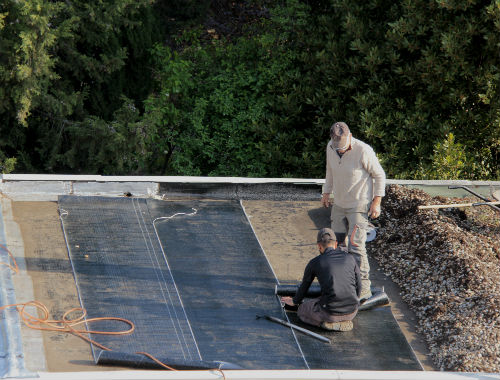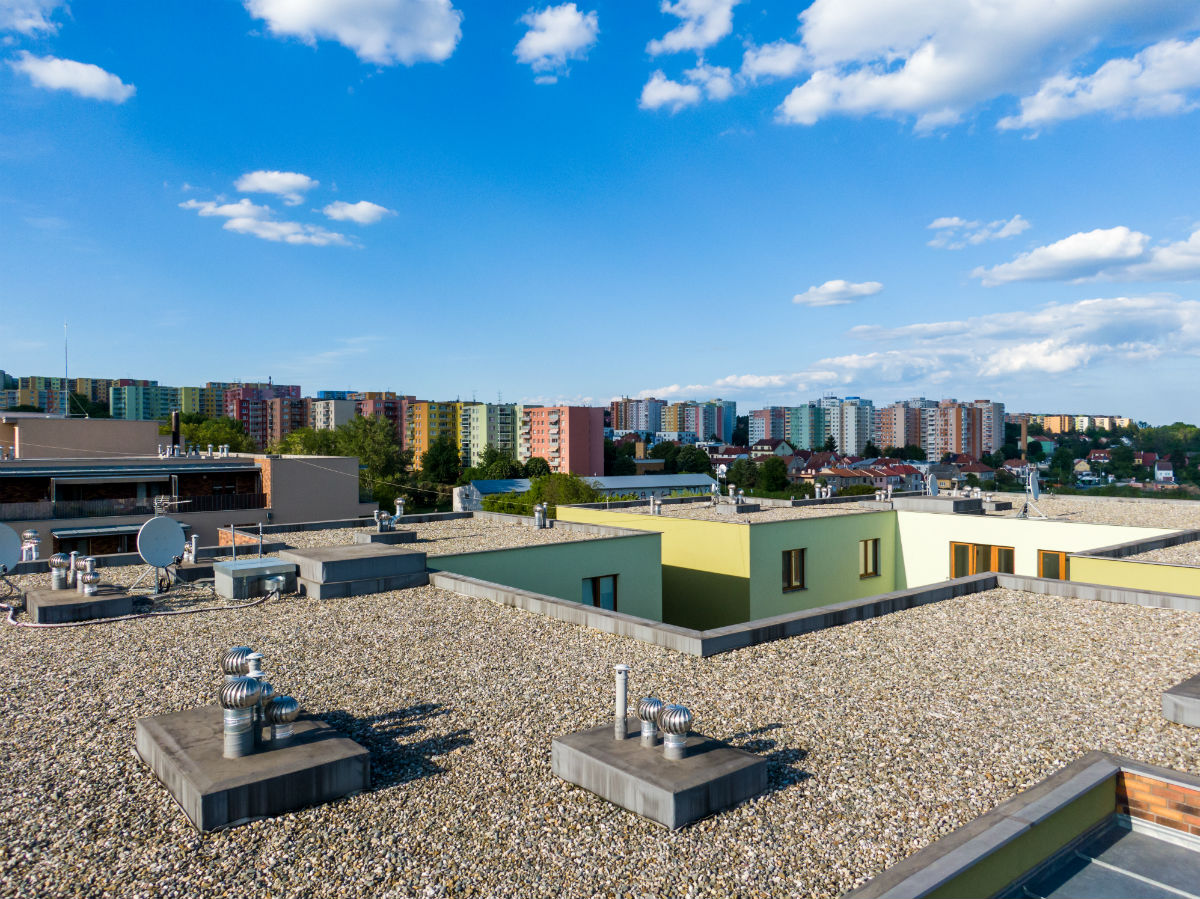For more than a century, Built-Up Roofing (BUR) systems have been an indispensable structural protection method integrated into many commercial and residential buildings throughout Colorado and the world.
This immense step forward in material science and engineering has reduced the cost of rooftop protection while also reducing the frequency of needed roof repairs. In short, Built-Up Roofing systems are efficient, effective, and long-lasting, and they’re a ‘go-to’ option for many Colorado flat roof building owners and property managers.
So, what exactly is a Built-Up roof? Why is it such a useful way to protect flat-roofed buildings, and what separates it from other common commercial roofing systems?
The roofing professionals at A-to-Z Roofing & Exteriors are here to answer these questions and more.
BUR Systems, Defined
Also called ‘Tar and Gravel’ roofs, Built-Up roofs are typically composed of multiple layers that work together as part of a unified membrane. These layers are called plies, and there can be as many as five or more plies making up a single BUR membrane.
BUR plies can be bitumen (essentially asphalt or cold tar), fabric, adhesive, or some alternating combination of the three. In most cases, a Built-Up roofing membrane starts with a base layer (called the bottommost ply), and the additional layers are added to the roof until the total membrane installation is complete.
The final layer of most BUR systems can include aggregate gravel or sand, glass fiber, or mineral-surfaced cap sheets. In other cases, hot asphalt can be mopped over the entire surface, or elastomeric coatings can be applied.
There are a few internationally recognized standards for some BUR systems. These standards are maintained by the American Society for Testing and Materials (ASTM), and they include:

ASTM D312, “Standard Specification for Asphalt Used in Roofing”
ASTM D450, “Standard Specification for Coal Tar Pitch Used in Roofing, Dampproofing and Waterproofing”
ASTM D1863, “Standard Specification for Mineral Aggregate Used on Built Up Roofs”
ASTM D2178, “Standard Specification for Asphalt Glass Felt Used in Roofing and Waterproofing”
…among others.
BUR systems are typically engineered specifically for the buildings onto which they’re installed. Some flat-roofed buildings don’t need the added protection of more than a few layers, whereas other flat-roofed buildings that are located in extreme climates might need more than is typical in other areas.
Why Choose a Built-Up Roofing System
Most BUR systems combine multiple protective technologies that work together to shield the building from water leaks, UV exposure, and other environmental degradation. In this way, you could say that a BUR roof is a hybrid creation of multiple roof types.
Because of the hardiness of most BUR systems, the lifespan of the roof is quite long. Most BUR system manufacturers warrant their products for 15 to 30 years. This warranty is in addition to the workmanship warranty that is often provided by the roofing contractor.
BUR Systems vs Single-Membrane Roofs
As effective as BUR systems are, they’re not the best choice for every flat roof in Colorado.
Factors like square footage, budget, sun exposure, and building type all come into play when making a decision about whether to go with a BUR system or a single-membrane roof.
Single-membrane roofs include Thermoplastic Polyolefin (TPO) and Ethylene Propylene Diene Terpolymer (EPDM). These two represent the vast majority of commercial single-membrane roofs in Colorado.
Single-membrane roofs are also slightly less expensive than BUR roofs, but not by a factor of more than about $1.50 per square foot. Single-membrane roofs are also faster and easier to install in many cases, as installation only requires the application of an adhesive and the membrane itself.
Single-ply membranes do come with some disadvantages, though. These include:
- Seams. Because single-membrane roofing comes in large sheets that need to be melded together, the seams can create areas of vulnerability if installation is not 100% accurate.
- More difficulty integrating roof inclusions. Skylights, light-transmitting panels, stovepipes, and other rooftop appliances require special attention when using a single-membrane roofing solution.
- Not as resilient to UV exposure. The gravel or sand layer of a BUR system offers superior protection from UV exposure. Single-ply roofing membranes don’t include this layer, and they can wear down faster over time because of this.
So, which commercial roofing system is right for your flat-roofed Colorado building? We’d be happy to provide a professional evaluation and recommendation.
Contact A-to-Z Roofing & Exteriors today, and let’s work together to arrive at the ideal roofing protection solution for your unique needs.

